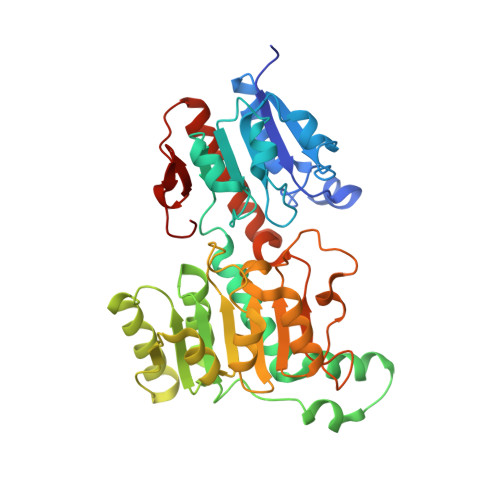Engineering a Formate Dehydrogenase for NADPH Regeneration.
Ma, W., Geng, Q., Chen, C., Zheng, Y.C., Yu, H.L., Xu, J.H.(2023) Chembiochem 24: e202300390-e202300390
- PubMed: 37455264
- DOI: https://doi.org/10.1002/cbic.202300390
- Primary Citation of Related Structures:
8J3O, 8J3P - PubMed Abstract:
Nicotinamide adenine dinucleotide (NADH) and nicotinamide adenine dinucleotide phosphate (NADPH) constitute major hydrogen donors for oxidative/reductive bio-transformations. NAD(P)H regeneration systems coupled with formate dehydrogenases (FDHs) represent a dreamful method. However, most of the native FDHs are NAD + -dependent and suffer from insufficient reactivity compared to other enzymatic tools, such as glucose dehydrogenase. An efficient and competitive NADP + -utilizing FDH necessitates the availability and robustness of NADPH regeneration systems. Herein, we report the engineering of a new FDH from Candida dubliniensis (CdFDH), which showed no strict NAD + preference by a structure-guided rational/semi-rational design. A combinatorial mutant CdFDH-M4 (D197Q/Y198R/Q199N/A372S/K371T/▵Q375/K167R/H16L/K159R) exhibited 75-fold intensification of catalytic efficiency (k cat /K m ). Moreover, CdFDH-M4 has been successfully employed in diverse asymmetric oxidative/reductive processes with cofactor total turnover numbers (TTNs) ranging from 135 to 986, making it potentially useful for NADPH-required biocatalytic transformations.
- State Key Laboratory of Bioreactor Engineering, Shanghai Collaborative Innovation Centre for Biomanufacturing, East China University of Science and Technology, Meilong Road 130, Shanghai, 200237, China.
Organizational Affiliation:

















